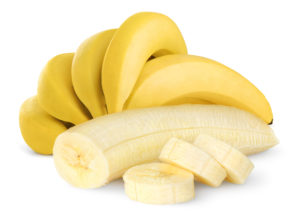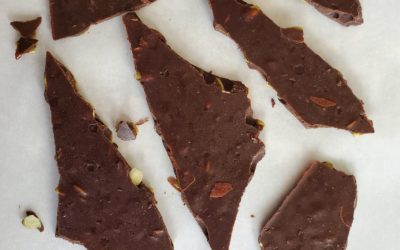I’ve been asked before what my favorite mineral is. While it’s hard to choose just one, if I HAD to pick, I’d say potassium. I know, I know, you’re probably thinking that’s a weird choice, especially when things like magnesium are all the rage these days. The reason I love potassium so much is that focusing on getting more potassium in my diet and through herbal infusions has made more difference in my health than any other thing. And I’m not alone. I have had countless clients drastically improve their symptoms by including more potassium in their daily lives. What kind of symptoms am I talking about?
Potassium Deficiency Symptoms Include:
-Muscle weakness and fatigue
-Muscle cramps and spasms
-Digestive issues like bloating and constipation 
-Heart palpitations
-Muscle aches and stiffness
-Tingling or numbness in hands, arms, legs, and/or feet
-Breathing difficulties
-Mood changes and disorders
-Increased urination at night – often due to insulin resistance
-Paralysis after high carb meal
-Insomnia
-Excessive thirst
-Dry skin
-High blood pressure
-Bloating
For me personally, I know I need to up my potassium again when I start to get leg cramps, wake up early in the morning and can’t fall back asleep, or if I get heart palpitations. Some of my clients have nearly every symptom on this list, while others only have one or two. And it’s no surprise because as adults, we’re supposed to be getting 4700 mg per day. And pregnant and breastfeeding women should be getting approximately 5100 mg per day. As many as 98% of Americans fall short of this goal.
You may assume that you already get enough if you like bananas. If I had a dollar for every time someone told me that they eat bananas, so they’re probably fine, I would be as rich as the person who invented the marketing campaign touting bananas as the best source of potassium on the planet. I’ve got news for you. While bananas aren’t a bad source of potassium, there are lots of other options, many of which contain double or even triple the amount of potassium found in a banana which contains about 400 mg.
So, how can you begin getting more potassium into your body? Foods like avocados, white and sweet potatoes, and leafy greens are some of the very best sources with approximately 1000 mg per serving. Coconut water will give you about 600 mg. Fruits and vegetables, in general, contain a fair amount of potassium. Here is a list of high potassium foods for more ideas. Blackstrap molasses is another good option and can be taken right off the spoon or added to other recipes. Last, but certainly not least is herbs!
Sage, catnip, hops, lemon grass, peppermint leaf, feverfew, and skullcap are all herbs that are very high in potassium. Interestingly, sage is known to be a drying herb (which makes sense because potassium helps the kidneys to remove excess sodium outside the cells – meaning bloating/puffiness reduces as the fluid leaves). Catnip, hops, and skullcap are all very soothing herbs that help to promote sleep (remember how I said that insomnia is linked to low potassium?). Lemon grass helps digestion and can also help with migraines (which feverfew is also excellent for). Beginning to incorporate these as teas is a great start! You can combine them or try just one at a time. I prefer to buy bulk herbs from a trusted source like Starwest Botanicals, Mountain Rose Herbs or Frontier Co-op. The usual dose for tea is 1 tsp per cup of freshly boiled water, and steep for 10-20 minutes.
Another one of my favorite options is making herbal infusions. What in the heck is an herbal infusion you might ask? The short answer is that infusions are essentially extra strong tea. Nettles win the prize here not only for their high potassium content (600 -1000 mg per quart jar) but also the calcium, magnesium, zinc, and chromium that are in even higher amounts. I could go on with all the other vitamins and minerals found in nettles, but suffice it to say, they have earned their designation as a “nutritive tonic herb.”
As you can see, there are a ton of options for getting more potassium into your diet. You may just need to be a bit more intentional about it! And before long, I hope that you, too, begin noticing an improvement in your health.
 Denise Brusveen is a Certified Women's Herbal Educator and Hair Tissue Mineral Analysis Practitioner and holds a Master of Science degree with a research emphasis in reproductive physiology. She is passionate about helping girls and women to become informed about holistic options to overcome health challenges related to their hormones.
Denise Brusveen is a Certified Women's Herbal Educator and Hair Tissue Mineral Analysis Practitioner and holds a Master of Science degree with a research emphasis in reproductive physiology. She is passionate about helping girls and women to become informed about holistic options to overcome health challenges related to their hormones.
Delicious (Healthy) Pumpkin Seed Chocolate
Zinc is getting a lot of attention right now for improving immune function, but I was interested in this important mineral long before that and discovered that pumpkin seeds are an excellent source. But I wasn’t impressed with their flavor plain, so I started...
Adaptogens – A Woman’s Best Friend
You might be asking, “Adapt-a-what?” Adaptogens are a category of herbs that help you to balance your body’s stress response. In a good year, many women could use help with that. But in 2020? Sign practically everyone up! One of the most important benefits of...
Birth Control and Period Problems
How are severe menstrual cramps, heavy bleeding, irregular cycles, PCOS, and endometriosis all treated by mainstream medical doctors? Birth control. The problem with this “solution” is that it does nothing to actually fix the problem. It merely masks the symptoms, and...
The Best Plant Ally For Bee and Wasp Stings!
While bees, wasps, and other stinging insects are out all summer long, they become especially active here in the fall…and mean! But have no fear because you may have the perfect remedy to treat a sting growing right in your yard! Plantain is considered a weed by many,...
Eat This (Not That)
If you follow me for any length of time, you’re unlikely to hear me ever talk about a one size fits all diet or protocol. Why? Because we’re all very different! Now, are there some things that we all should generally avoid? Of course. Nobody ever got healthier by...






Recent Comments